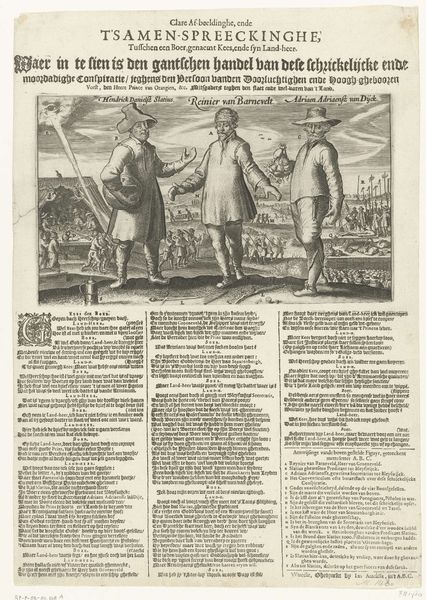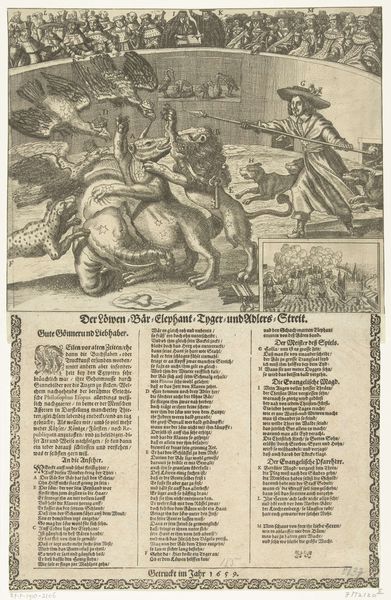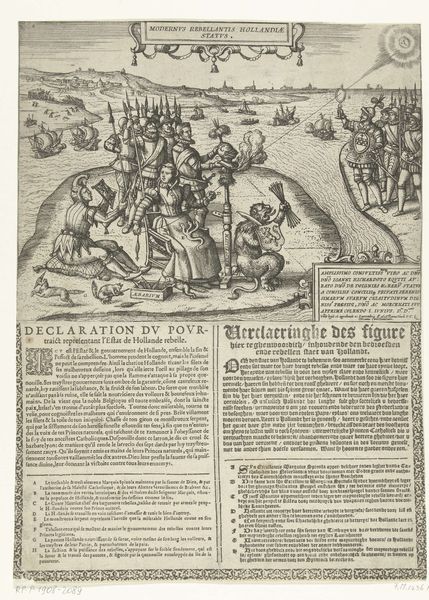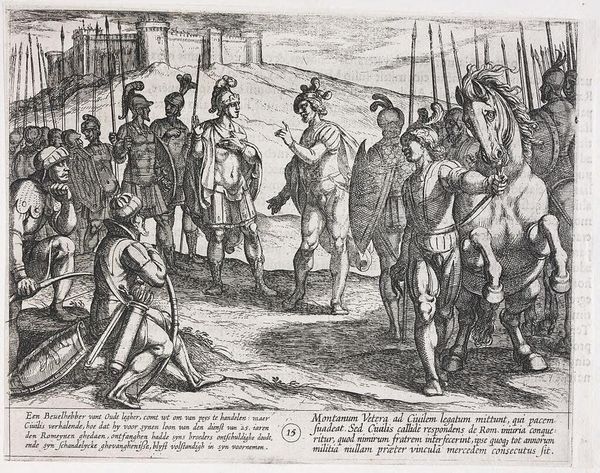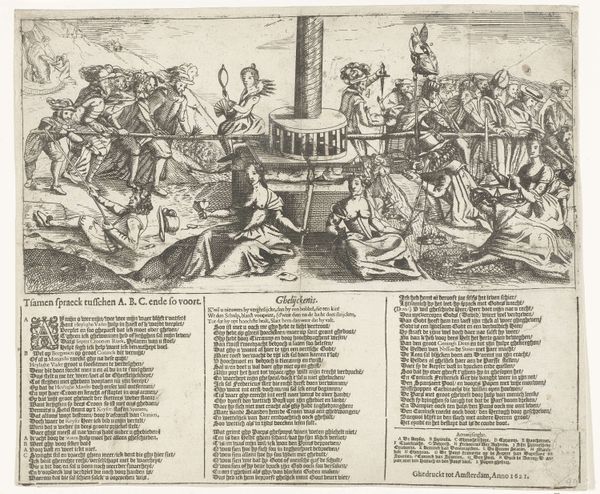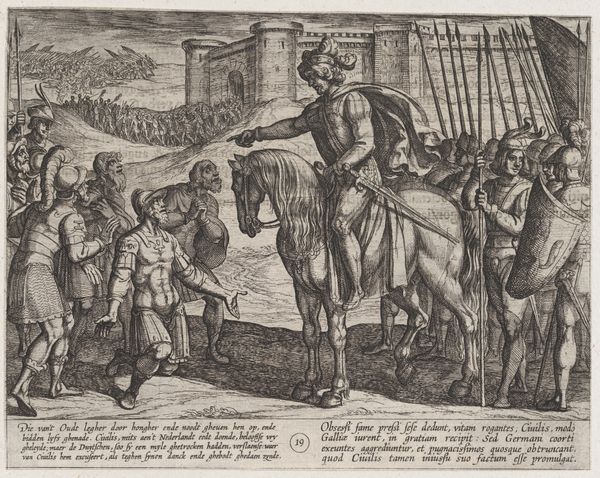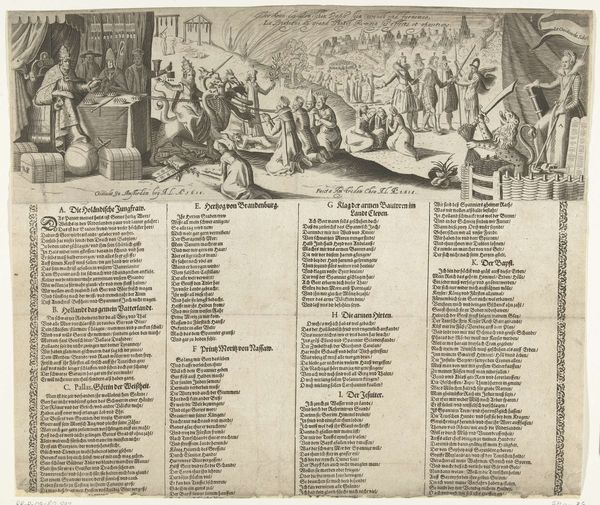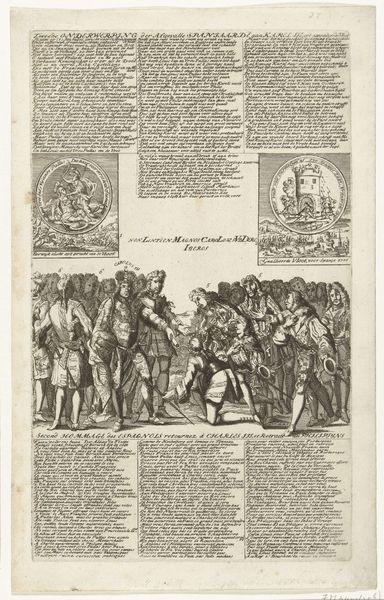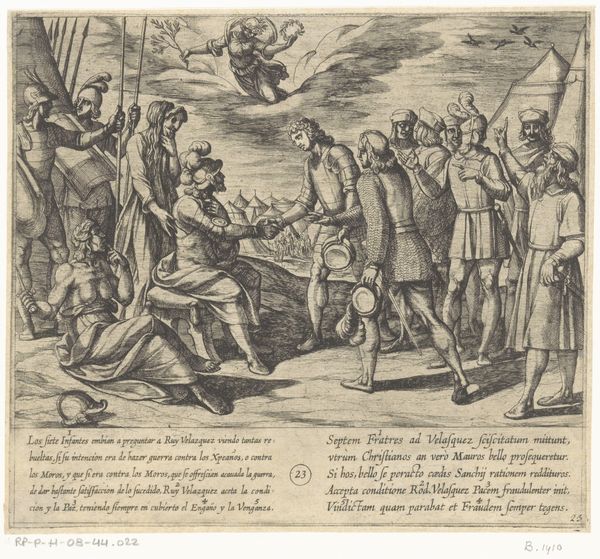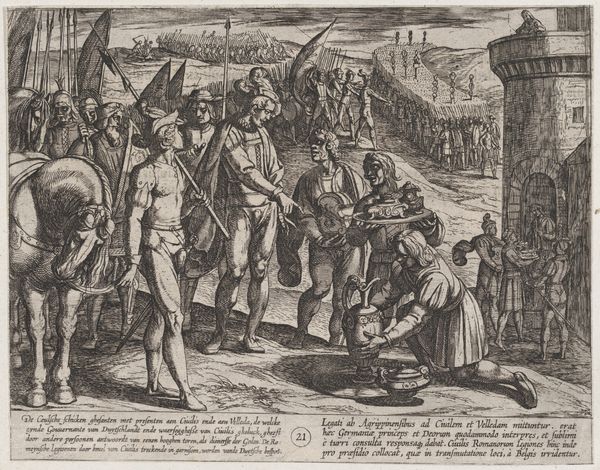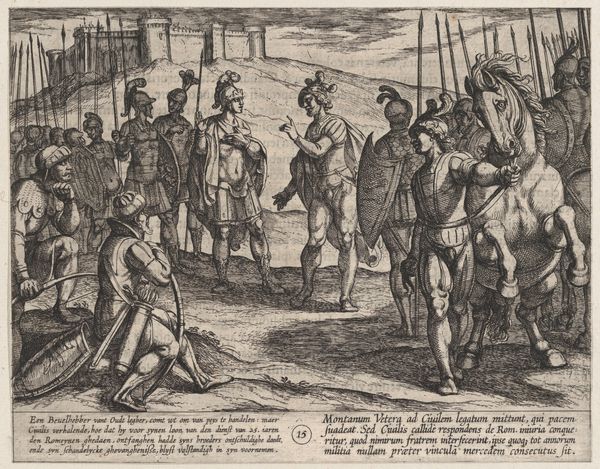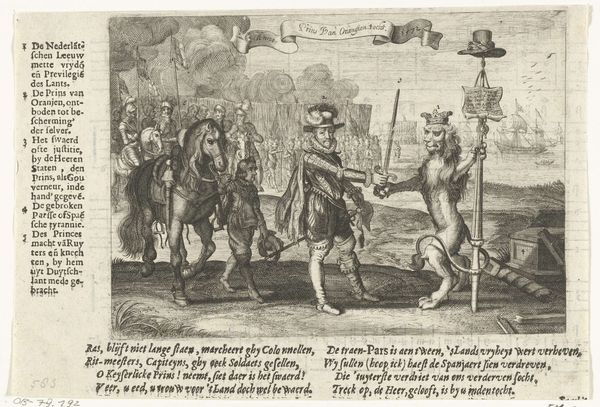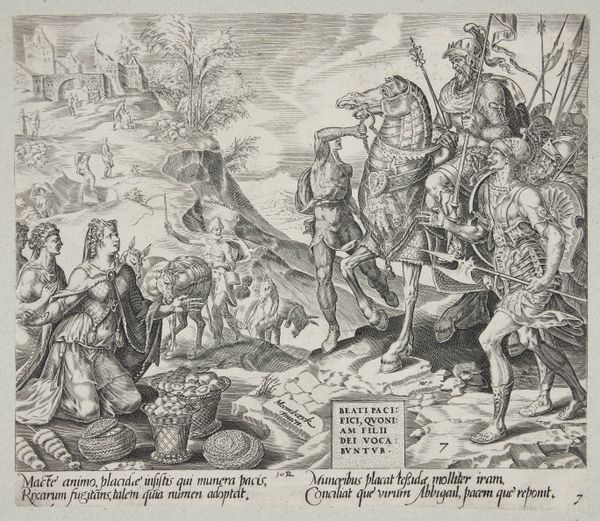
print, engraving
# print
#
genre-painting
#
history-painting
#
engraving
Dimensions: height 467 mm, width 344 mm
Copyright: Rijks Museum: Open Domain
Curator: This engraving, dating back to 1646, is titled "Spotprent op het Spaanse verlies van Duinkerken," or "Satirical print on the Spanish loss of Dunkirk." It's currently held in the Rijksmuseum and created by Crispijn van de Passe the Younger. What's your immediate take on this rather busy scene? Editor: The overwhelming feeling is one of distress and perhaps a bit of darkly comic absurdity. Everyone seems to be exploiting or attacking the poor cow! There’s a sense of political chaos. Curator: Precisely. It’s dripping with symbolism, playing on the political tensions of the time. You see, the cow, emblazoned with the coat of arms of Flanders, represents the region itself, suffering under the conflicting interests of various European powers. Editor: So, who are these figures surrounding the cow? The one desperately milking her seems to be in the most vulnerable position, literally and figuratively. Curator: That figure represents Spain, desperately clinging to its dwindling control over Flanders, symbolized by trying to extract milk from the cow. Other figures—French, Dutch are all vying for influence. And Dunkirk can be seen in the distance in the upper center. Editor: The text underneath reinforces these national characters? Almost as if these were captions or word bubbles, clarifying everyone's desires. This way the picture speaks directly to the audience about a timely political subject! Curator: It does provide direct social commentary. The print aimed to shape public perception, particularly regarding the declining Spanish power. Prints like these were mass produced. The Dutch were fighting for independence from Spain. So the production and distribution of this print falls under a wide history of anti-Spanish visual media and culture! Editor: Knowing that clarifies the anger directed towards the prostrate, defenseless figure; though even in political commentary, that vulnerable, defeated body can elicit some sympathy. Seeing symbols brought into the visual plane gives insight into history itself, how groups made sense of their circumstances and tried to influence others. Curator: Exactly. Prints offer a fascinating lens into understanding public sentiment and political maneuvering. Editor: It's interesting to realize how impactful visual metaphors and their associations can be. The work clearly had a lasting impact, still potent in symbolic charge centuries later.
Comments
No comments
Be the first to comment and join the conversation on the ultimate creative platform.
